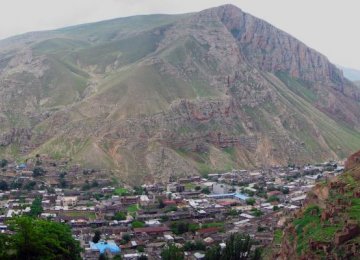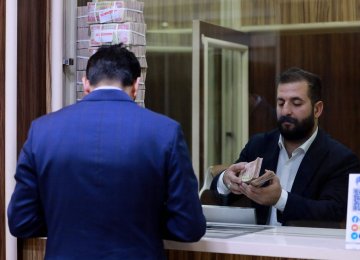Maku Free Trade Zone or MFZ is one of Iran’s least well known transit points positioned in the west of the country. With just over 20 kilometers (13 miles) from the Turkish border and surrounded by mountains, MFZ has had one of the best historical trading advantages through the ages. The small town of 44,000 people (2006 census) is separated by Zangmar River, which travels on through the West Azarbaijan region. The designated zone itself encompasses just over 5,000 square kilometers in total – the largest free zone yet. The local population includes both Azeri and Kurdish speaking people who can also speak Persian.
The area officially became Iran’s latest official free zone in 2011 and was sanctioned by the West in 2013. But it has had a slow time getting itself up and running. Maku, like other free zones around the country does have many advantages which include beneficial rates on all goods, flexibility in visas for foreigners, and ease of credit for foreign business.
Iran’s Customs Administration Director Abbas Memar-nejad made the announcement for the inclusion of Maku as a free zone in May 2013, adding that “Bazargan border is the only ground entrance for trade between Turkish and Iranian business people.” Iranian and Turkish businesses were then offered the fortunate position of being the first nationalities to set up in the zone with favorable rates for new production and storage facilities.
Current Problems
Maku free zone’s website is impossible to find online. First of all, the only reference in English language for the zone is a Wikipedia article that has fleeting mention of the zone, and focuses more on the town itself from the historical point of view. Second, Maku Free Zone’s website, isn’t even a first hit on Google, and is left somewhere down the page making people interested in the zone struggling to find somewhere to start. Worst of all if one logs on to the zone’s website, they will be left with a site that looks unfinished at best. Currently all the sub-sections on the website are empty, which doesn’t bode well and the news section has been completely ignored.
According to the official website of the Iranian Free Zones Organization (freezones.ir), Maku doesn’t appear in any of the references. This omission highlights the many issues regarding the status of free zones around the country. If the zone is registered on the main English language site, potential business people will be more willing to make the effort to visit the place.
Bringing the Dollars
Recently Tehran’s Ambassador to Baku stated that Azerbaijan and the Islamic Republic would like Azeri businesspeople to enter the Maku zone. Mohsen Pakayeen said, “Maku region has the appropriate capacity for investment and to this end interactions among investors can result in new and exciting economic developments in the region.” The envoy underlined that Maku has a suitable geographical location, rich mineral deposits and fertile agricultural lands. The official also highlighted the issues afflicting the zone.
Pipeline Dreams
Maku has been given a high priority by the governments of both Iran and Turkey, who see the free zone as the main transit point between the two large developing nations. The zone hosts the main Iran-Europe Gas Pipeline (IEGP), which is currently being constructed by the Iranian Gas Company to meet the much needed demand for gas from European consumers and businesses. The route of the proposed pipeline will start at the gigantic South Pars Gas Field in the Persian Gulf and will continue its way through western Iran to the Maku zone area, near the Turkish border.
The pipeline consists of two principal sections: first, the Iranian section which is called the Gas Trunkline 9 or IGAT-9. It starts in the Persian Gulf city of Assaluyeh and ends on the northern Bazargan exit area just north of the Maku town. Second, the section that crosses Turkey, Greece and enters Italy, where the pipeline splits, sending gas to Switzerland, Austria and Germany in the north and to France and Spain in the south.
The estimated cost of the overall project is around $7 billion. The project comprises of 17 compressor stations, many of which pass through the free zone itself. It has been suggested that China will part finance the whole operation. Current estimates from industry magazines put the Chinese contribution at $42.8 billion for investment in Iranian refineries and pipelines. Some analysts suggest Iran is also touting European companies to fund the project.
Connections
Although the area is one of the main transit points west of Iran, Maku and the surrounding region has suffered from a lack of infrastructure investment over the past decade, mainly due to the centralization policies of the previous government. Airports in the area are currently below international levels of acceptability for trade and investment. The authorities in Maku announced in 2013 that the construction of a new airport was underway, though there have been no updates on its development in recent months.
Potential Business
The Free Zone Organization has published a list of different types of businesses which have been designated for construction in the free zone. These include UPVC manufacturing, food factories, hard stone production, gypsum manufacturing, greenhouse-produced fruit and vegetables, and electronic manufacturing. The organization has also stated that it sees other areas with potential to be established within the zone; these include toy manufacturing, motor manufacturing and nanotechnology production, but how likely these are in the foreseeable future remains to be seen. The MFZ has listed the cost of these types of investment in thousands of dollars and welcomes foreign business investment as well.
Future
What does the future hold for the Maku Free Zone? In late October, Akbar Torkan, a senior advisor to President Hassan Rouhani stated that free zones in the country must seize the opportunity to bolster investment. He said Iran has regarded establishing free trade zones as a lucrative economic phenomenon. Twenty-five years ago, Iran established 3 free trade zones to facilitate its economic ties with neighboring Persian Gulf Arab nations, but Torkan said “due to a variety of factors such as political disputes, problems remained in getting them to where they would ideally like to be.”
The same goes for the northern free zones. Although they are not as well established as their southern counterparts, they have also faced a variety of developmental problems. Torkan did state that these problems, which have adversely affected the free zones, would end and that the country is determinant to further reduce its reliance on oil revenues considering the recent collapse in crude prices. The future for the free zones and Maku in particular now hangs in the balance of future government decisions on how to develop trade in such zones. The Rouhani administration says it is seriously pursuing the idea to transfer industry and knowledge into the zones to give them a fighting chance at the very least.







